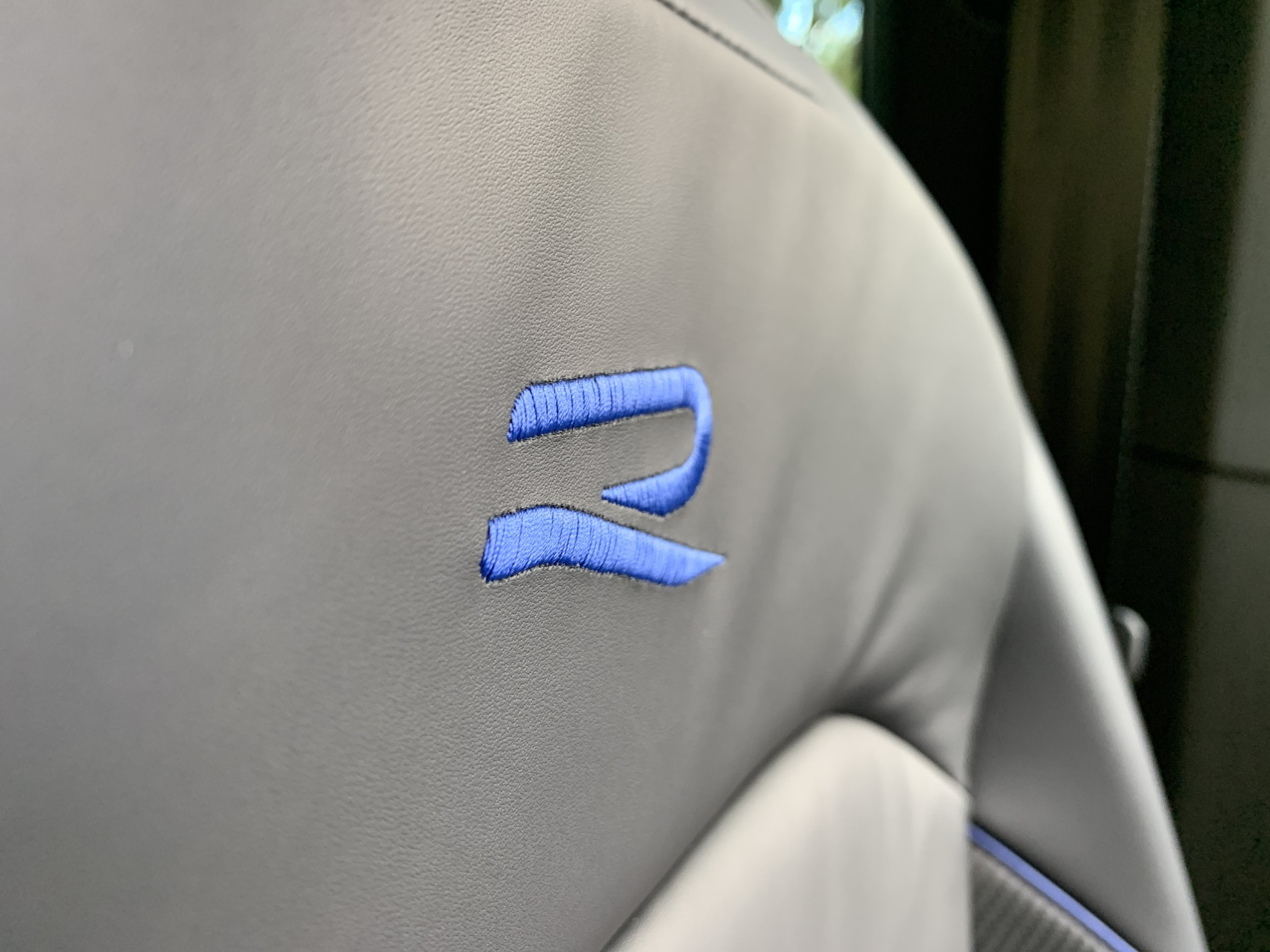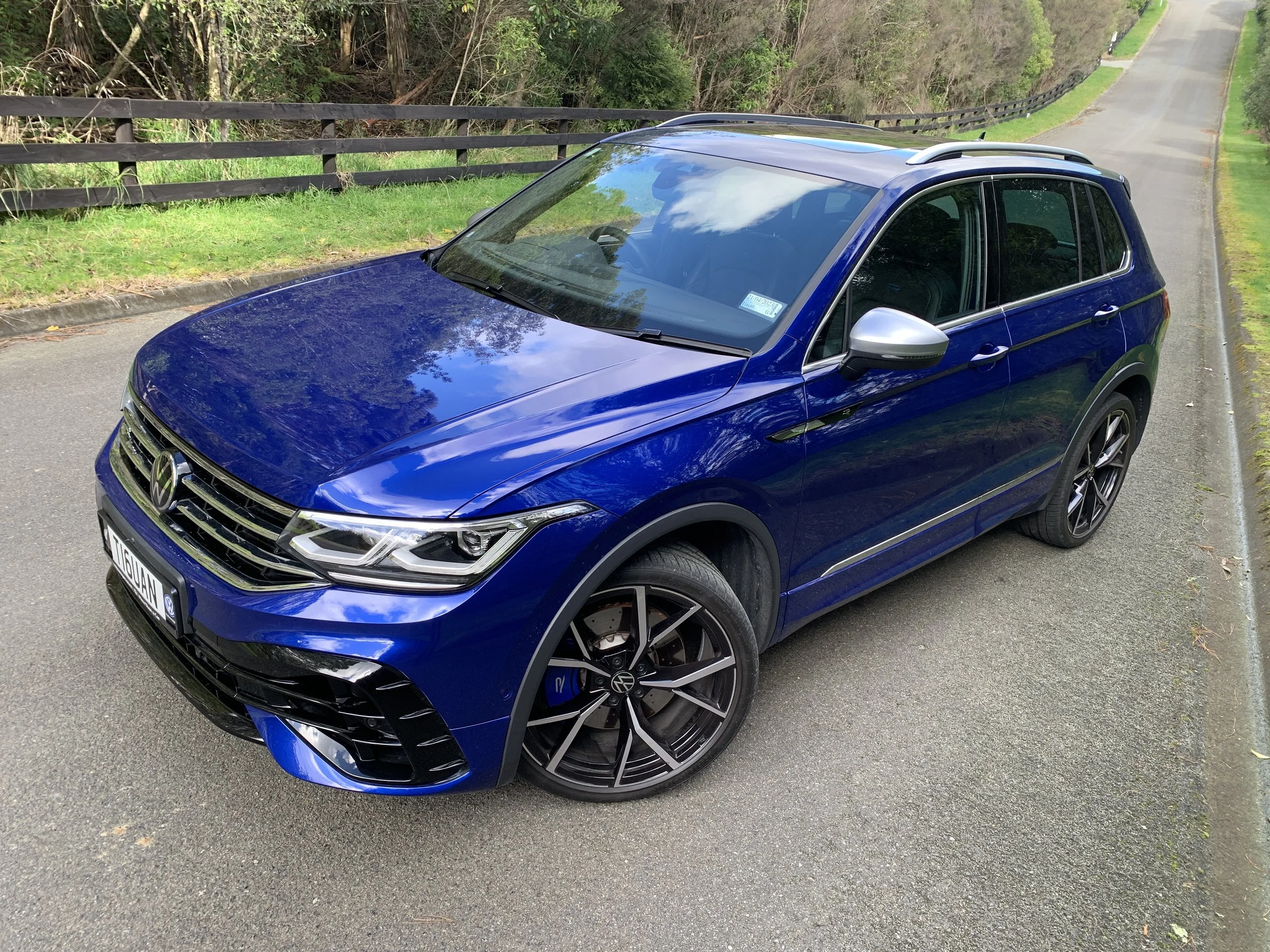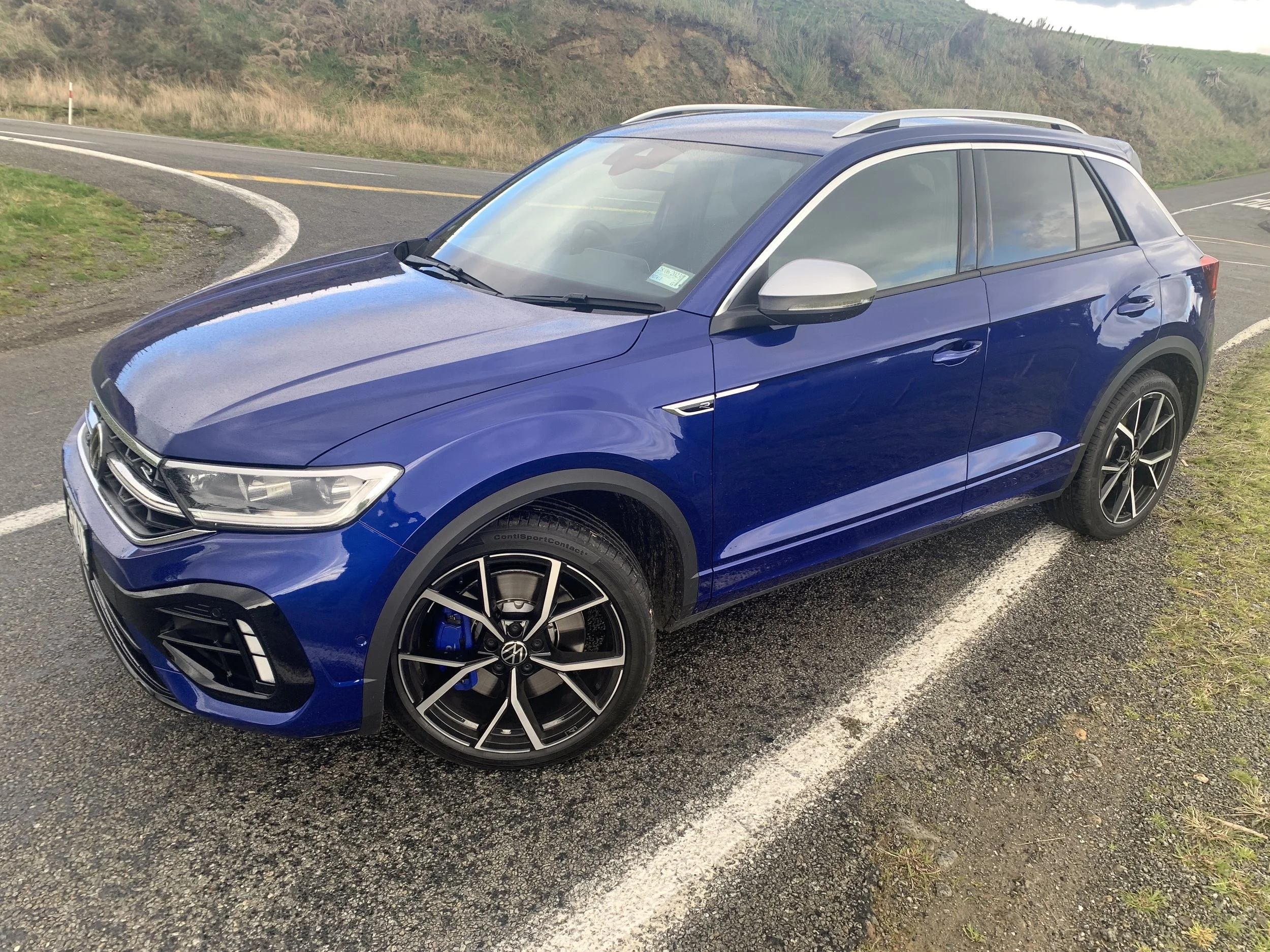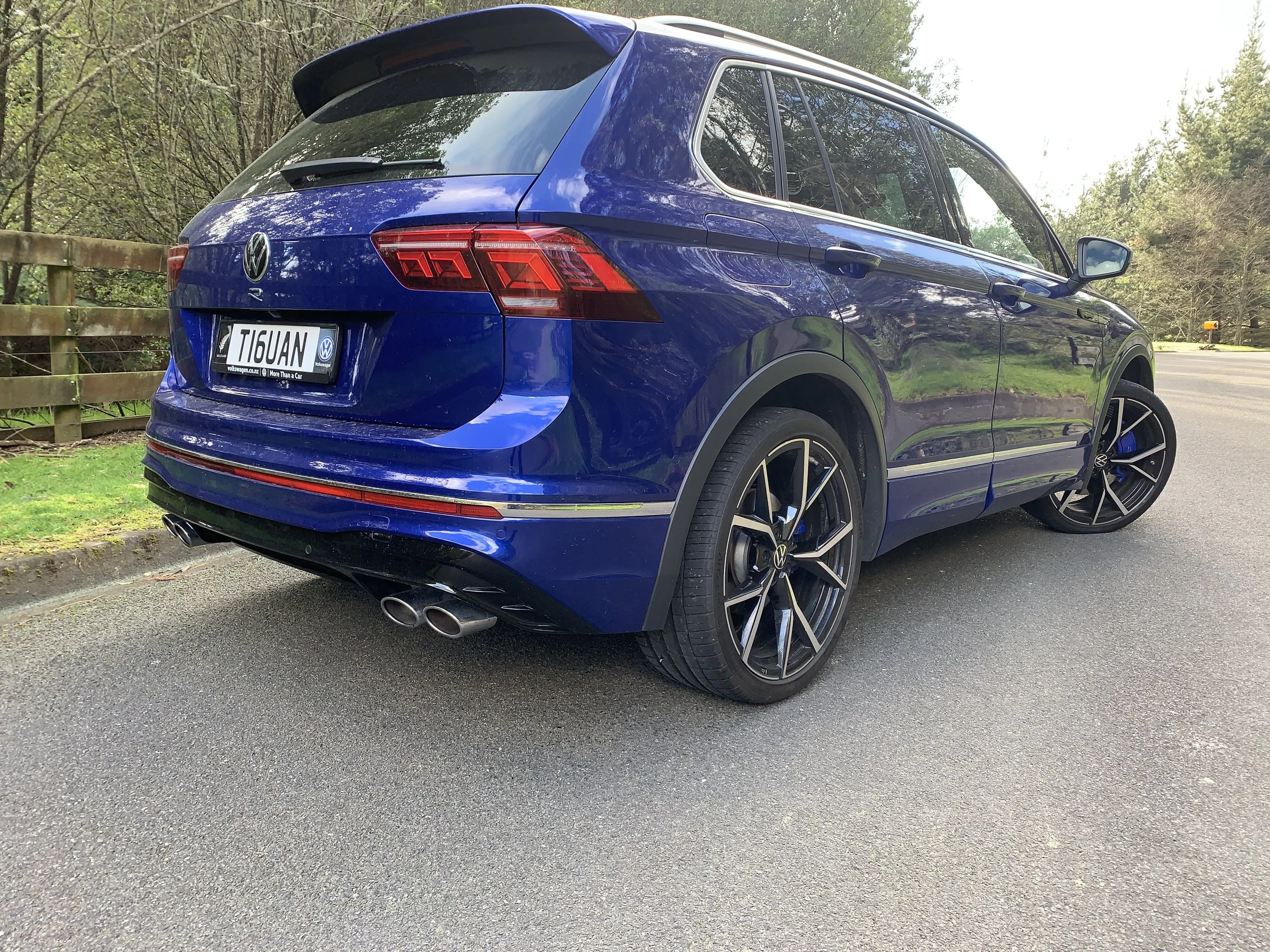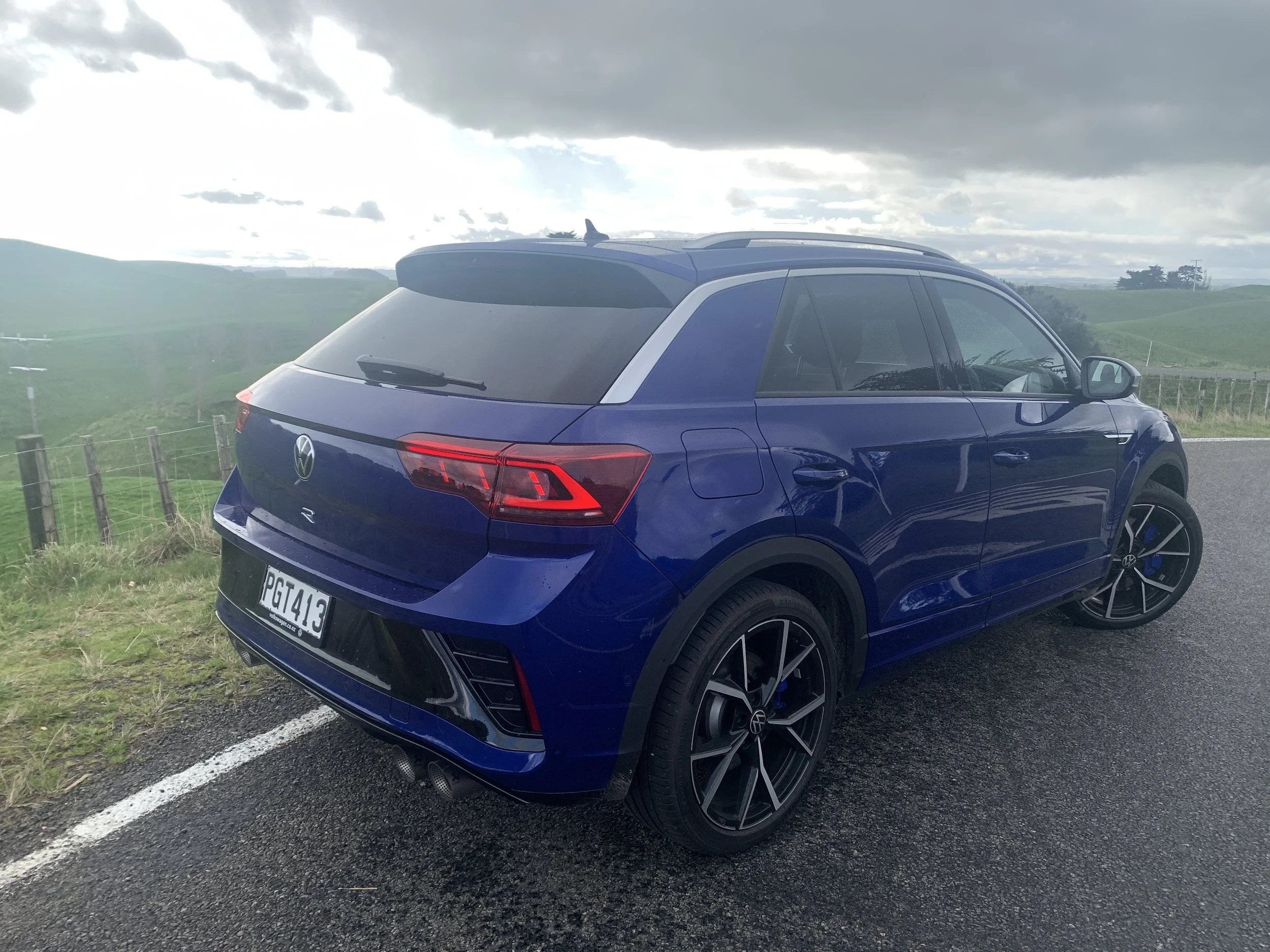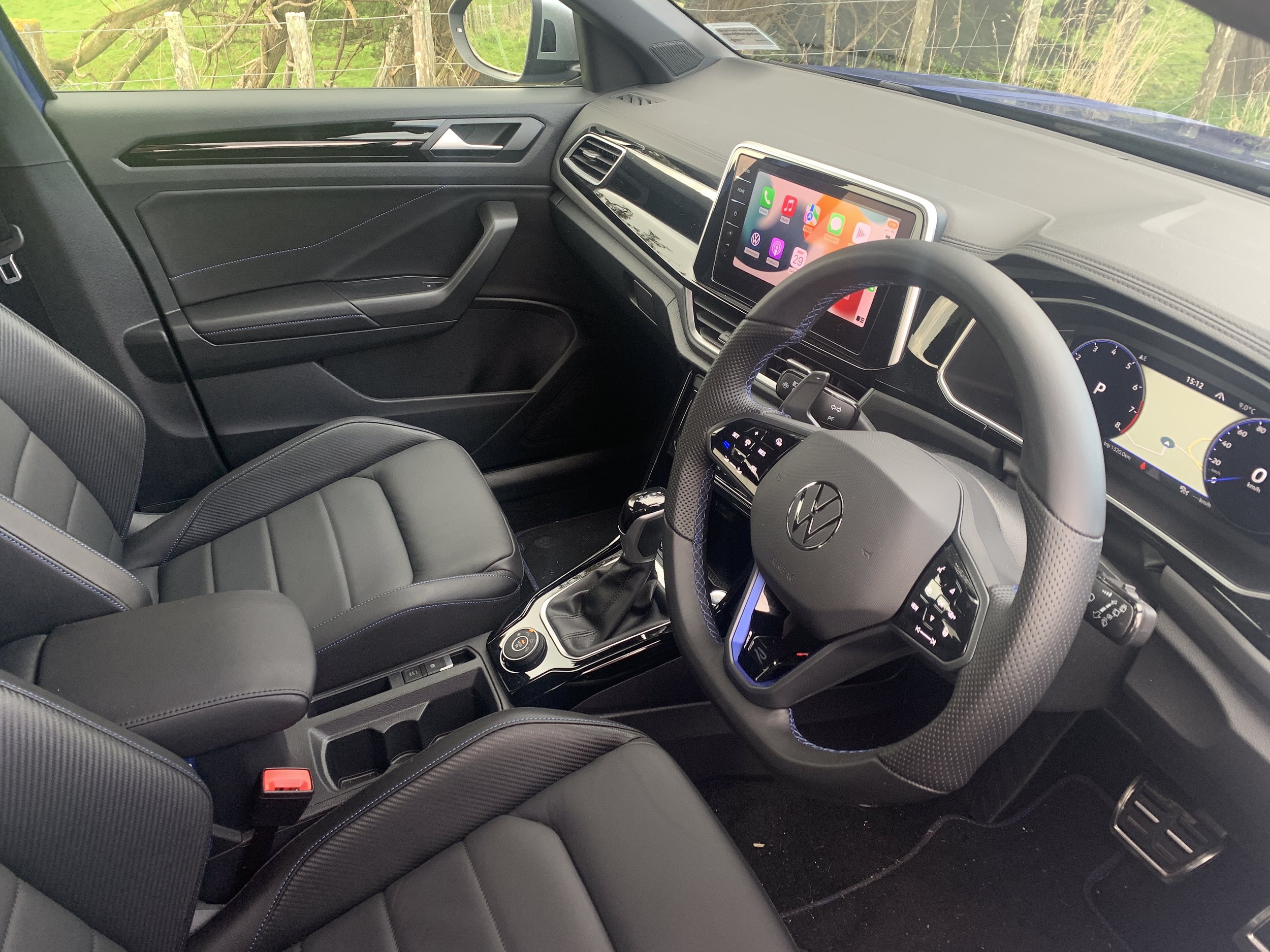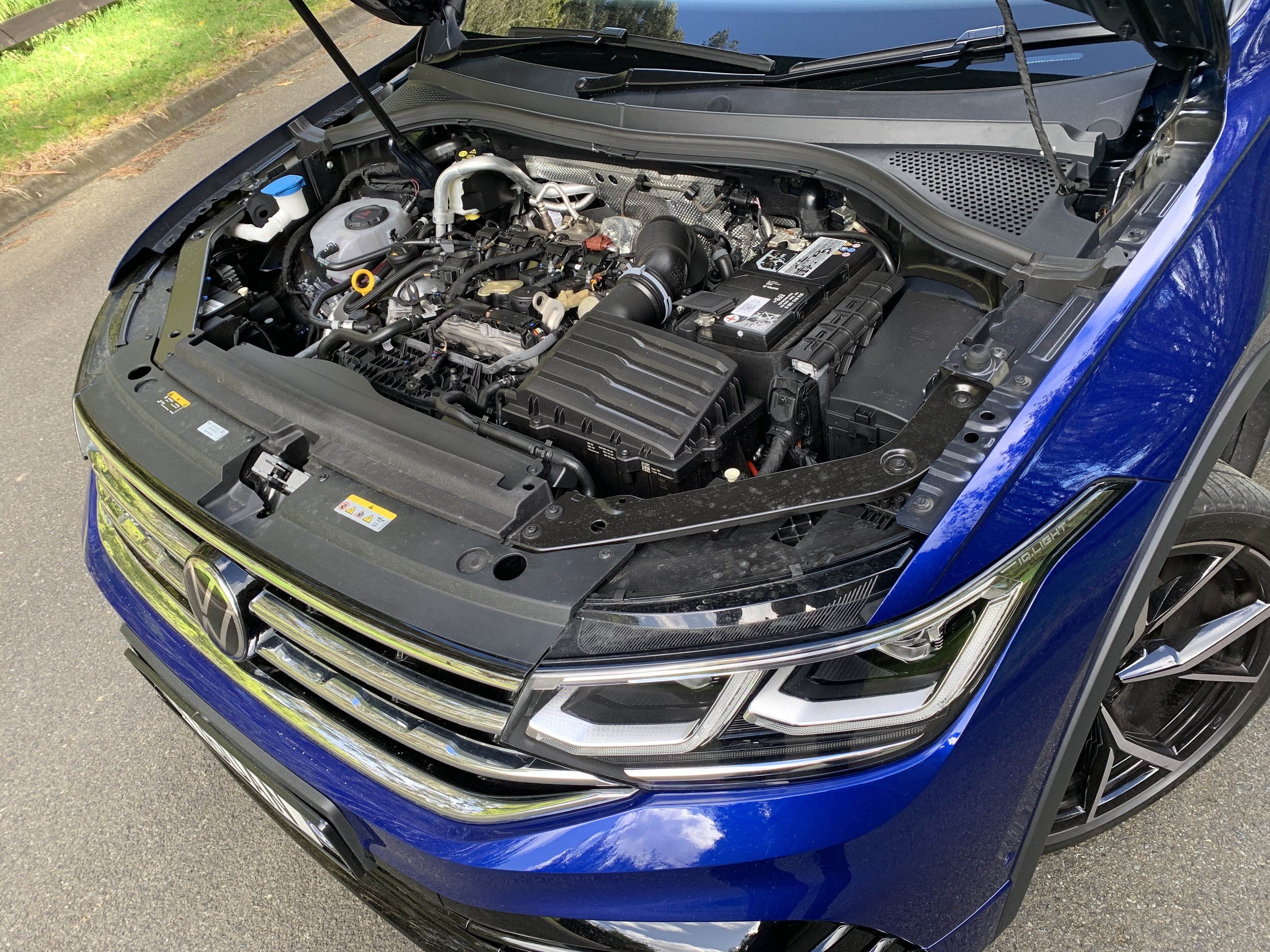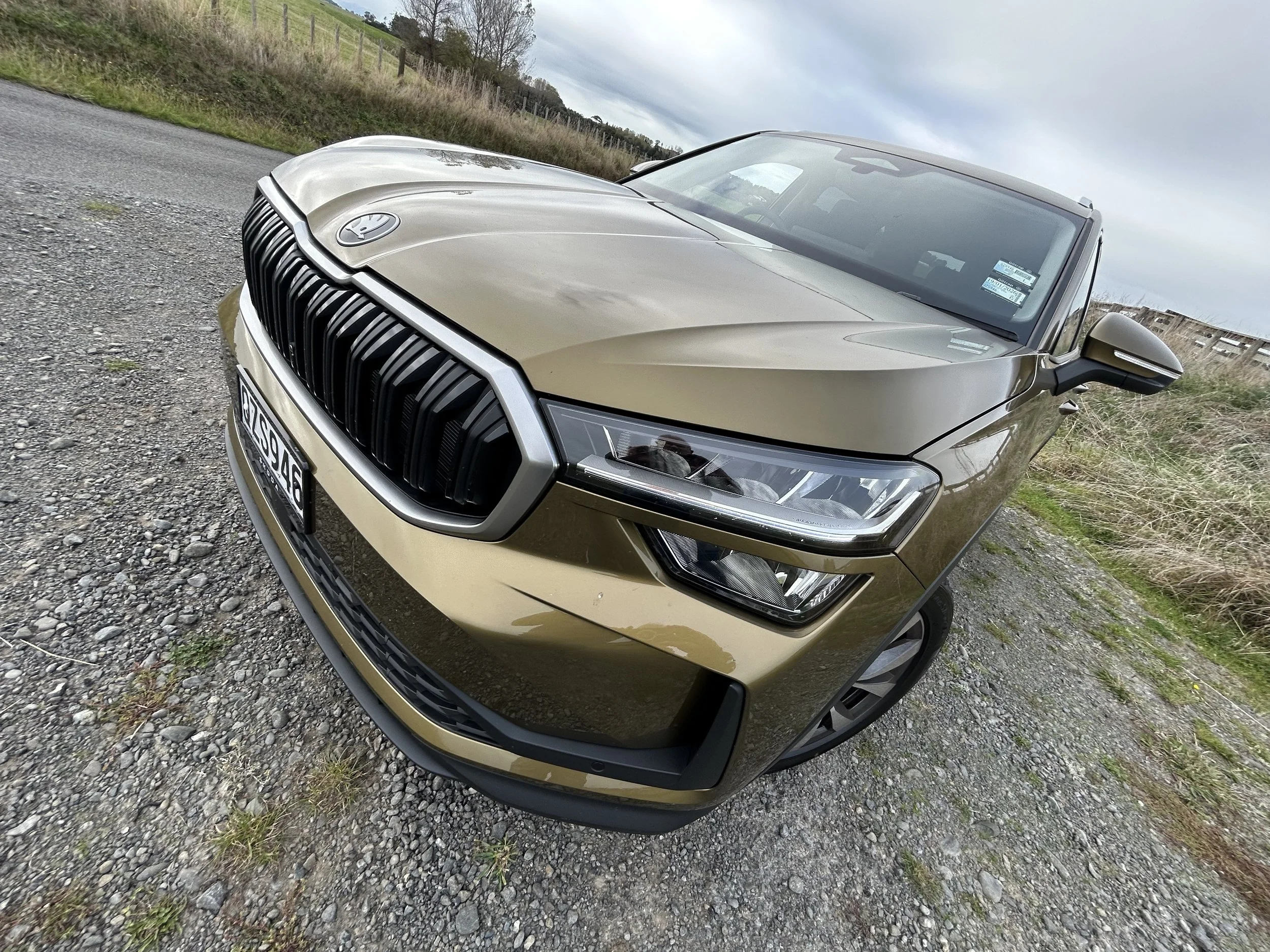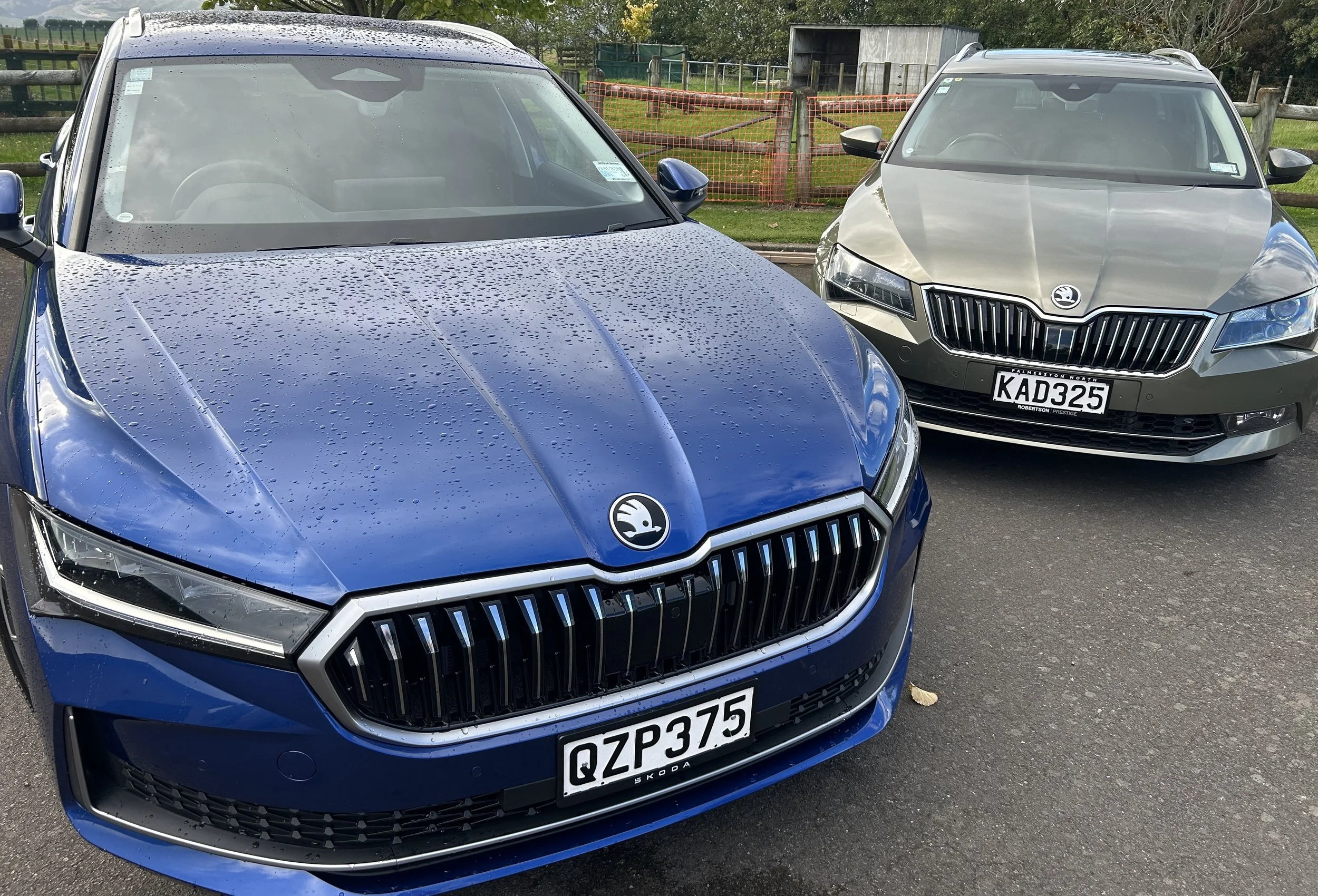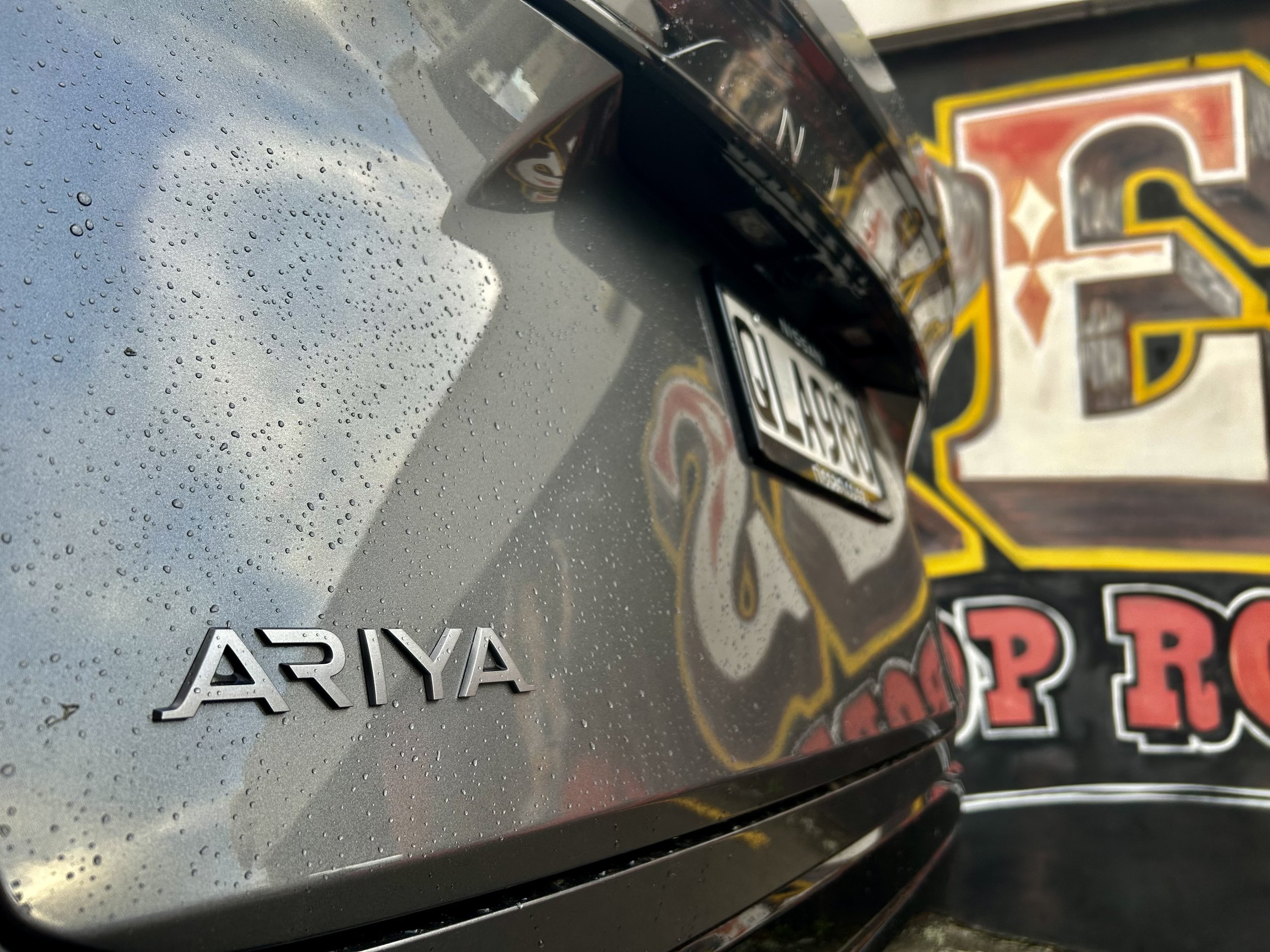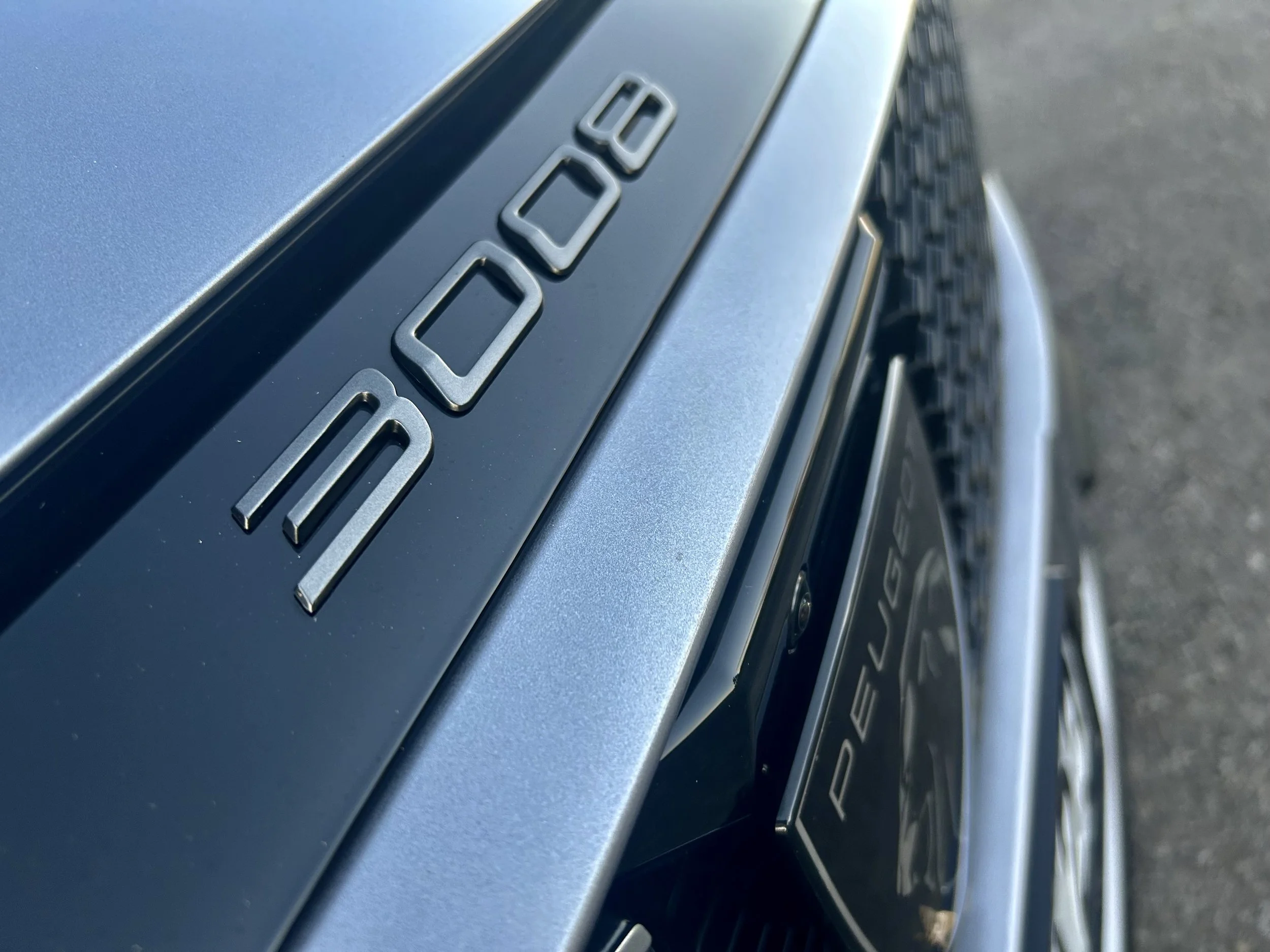VW Tiguan R, T-Roc R roadtest review: Sizzling sensibility
/The sporty, high-performance versions of VW’s related sports utilities are intriguing involvers.
Tiguan R
Price: $85,990
Powertrain: 2.0-litre turbopetrol, 235kW/400Nm, all-wheel drive, seven-speed direct shift, economy 9.7L/100km, 220g/km CO2.
Vital statistics: 4514mm long, 1859mm wide, 1668mm high, wheelbase 2678mm.
We like: Punch, practicality, pleasing design.
Not so much: The reason is more solid than the relevance.
T-Roc R
Price: $68,990
Powertrain: 2.0-litre turbopetrol, 221kW/400Nm, all-wheel drive, seven-speed direct shift, economy 9.3L/100km, 215g/km CO2.
Vital statistics: 4236mm long, 1819mm wide, 1559mm high, wheelbase 2594mm.
We like: Intuitive driving feel, well-sorted cabin, right-sized and priced.
Not so much: Doesn’t get the full R treatment.
BEFORE getting into the two cars it has influenced, just to remind: The new Golf R is awesome.
A Nurburgring lap record for the latest simply cements impression it’s the best race track-ready car VW sells; you can hot lap it endlessly and take it back to work next day, with only brake dust on the rims to betray what sort of Sunday you’ve had.
But I know what you’re thinking: It’s a hatch. So it’s in a niche. Not like sport utilities; they’re everywhere and can do no wrong.
The logic for therefore creating the Tiguan R and T-Roc R cannot be faulted; two crossovers with the hot new drivetrain, in packaging far more popular with new car buyers world over. Especially the Tiguan given that it’s VW’s top seller internationally.
So, adding to ‘R’ to the ‘T’ is just a big no-brainer. Customers are happy and so will be VW; for one reason that putting this specialist 2.0-litre turbo hardware into more cars very much amortises the development costs.
They’re really fun cars, both; with a lot of pukka R feel to them. But it’s a more than just a taller kind of fun than the Golf R delivers; they’re a different kind of performance satisfaction.
Reality will strike were you to consider these as race circuit choices. There’s no argument that SUVs can be tailored to become incredibly adept track cars. But just as the Porsche Cayenne and Macan will never better a 911, it’s hard to imagine Tiguan R (above) and T-Roc R (below) ever quite outshining a Golf R on a circuit.
So much is the same – right down to the Race mode via the blue R button on the steering wheel, that’s puts everything in competition mode – and, yet …
Still, no need to sulk about that. They’re still a ball. And, truth is, the relevance of that side of things should never be a single defining factor. Sure, it’s nice to have track cred, but ultimately road cars that do well on race circuits still have to be good road cars, because that’s primarily where they operate.
In that respect, the T cars are better choices simply because they deliver a broader swath of better outcomes. In saying that, it’s clear they’ve been tweaked beyond the point of what some buyers drawn to each in their mainstream formats might determine to be sensibility.
For one, the T cars they are – in all senses - firmly resolved. With emphasis on firm. That’s just something you need to live with. When it comes to measuring absolute cojones, Tiguan conceivably has an edge in pure performance terms because it dives more deeply into the R recipe. But T-Roc cannot be under-estimated. Yes, it goes a bit lite on the R stuff, and that impacts on what it does and how it does it, but don’t think it hasn’t learned some Ninja skills.
With Tiguan, though, you get the engine with exactly the same outputs as Golf R . Plus, it has the hatch’s 4Motion AWD with the new ‘R Torque Vectoring’ system – a trick torque vectoring diff. Basically, that’s a function you’ll really grow to appreciate if you decide to start to chucking this model around. It does brilliant things in keeping it all in check. You can wring out the engine without throwing the chassis into utter disarray.
Both also get a number of suspension tweaks to sharpen up handling, as well as an aluminium front subframe and R-specific dampers.
Tiguan and Golf R are currently delivering in First Edition trims; but the SUV is second-placed in that its drive mode selections aren’t as expansive. You don’t achieve the Drift and ‘Special/Nurburgring’ set-ups that really enliven the Golf, making it super fun on winding, undulating country roads.
The DSG holds gears as long as possible and downshift early and aggressively under braking. The Tiguan doesn’t really feel any the worse for not having that.
It’s still a rapid car for that kind of environment and its tenacity is enhanced in other ways – for one, goes up a wheel and tyre size over the Golf by having 21-inch rims clad in fat 255/35 tyres – plus it gets the hatch’s sports brake kit comprising 18-inch cross drilled discs with beefy brakes and (R logo'd, blue callipers).
What keeps the ‘Tig’ more in check when punting is obvious from a walkaround; it’s a more substantial vehicle. Not a tonne more, as it’s one the same platform as Golf, but there’s far bit more metal, glass and plastic substance loaded on top. It’s taller too. That has bearing on its demeanour. Even with the suspension set to its stiffest setting, there’s body roll and it wriggles more, too. But that’s when driven to an extreme that, while likely to raise a grin from the driver, would have any other occupants begging to decamp.
The relevance of the R badge sounds out when giving it the hammer. Bootloads of throttle opens up access to an audacious crackle-pop soundtrack out of those quad pipes, though, and in respect to get up and go … well, it’s certainly still pretty decent. Off the line starts are sharp indeed and the track driving confirms that any sensing there’s a heap of the shock wave of oomph left untouched when 100kmh is reached is spot on. This thing moves.
And that’s why you buy it over an R-Line? Pretty much. The trade-offs are in it being so resolved that it’ll be uncomfortable for others though, of course, the premium over lesser Tiguans also shows in the lush, bordering on luxury specification.
Tiguan in general lifts its presence as result of a restyle that leaves it looking much a lot more like a junior Touareg now but R is the most ‘finished’ of the lot as it has all the top-drawer stuff embellishments, such as the fancy IQ. Light matrix LED headlights that even in darkest, bleakest conditions faithfully mark out the way ahead without dazzling oncoming traffic. LED tail lights with directional indicators, another high spend signature, also feature.
It gets all the additional styling touches, notably the contrasting black and chrome accents, and aero enhancements, some just for status, one or two demanded - it has big vents up front to cool the three radiators behind.
As much as this point of this kind of car is to be practical, and to that end the type serves its buyer well: The interior is spacious, with stretch-out room in the back seats, and the boot is unchanged from standard with 615 litres of capacity seats up and 1655 seats down. Of course, you might think the interior is too nice to suffer dogs in the back, stinky sports gear and day care run punishment, but all martials look hardy enough to suffer that.
There’s palpable improvement in quality, fit and finish this time around anyway. The front seats are electric adjusted and have heating and cooling, the tailgate is motor-driven, it fits out in full leather, takes a top-class stereo system and multi-zone climate control air conditioning. VW remains a big mean on its UB port provisions in both models, though.
The MIB3 infotainment system is an older style than in Golf, but better for it. Some of the presentation fonts look dated yes, but the graphics are crisp, and it reacts quickly, with none of the Golf’s occasional glitchiness. The digital instruments also look good, and there's a useful level of information that you can call up on the big screen behind the wheel.
The mission in life for any SUV of size is to be roomy, comfy and safe. On all those points, the Tiguan hits its marks. Would you call it a driver’s car? Not outright, no. It’s fast, rock solid and reassuring and looks flamboyant, though, and that’ll be enough to sell it if there’s also need use it as family hack.
So where does that leave the T-Roc R?
Still in with a definite fighting chance, not least if the Tiguan seems too big a serving. Yes, it’s more of an urban SUV, yet in a scenario in which there’s need for a seriously sporty crossover rather than a hatch but really cannot see need for it to be fully family-sized then … well, assuredly you could easily do a lot worse.
The T-Roc is also a crossover based on the hatch platform, but though far more closely apes the Golf R in dimension and even general appearance, it’s not exactly the hotshot with additional elevation, either.
The reason why the T-Roc seems dumpier in look is result of it being 54mm shorter, 30mm wider, having a 36mm shorter wheelbase and standing 117mm taller, in part due to it having additional underbody clearance. Though, on that matter, it’s more grounded than other T-Rocs, with a 20mm reduction in ride height.
It’s not quite a Golf R in attitude, either, as whole it has the drivetrain, while the engine maintains identical torque it loses 14kW; the latter’s more negligible than it also being less resonant in tone. By this car and you’ll be Googling ‘akrapovic’ (actually, don’t bother, the exhaust upgrade is $5500).
Not quite Golf R in overall ability, either, given the kingpin hatch’s tricky torque-vectoring rear axle doesn’t transfer. In general operability, you might not notice … it’s very much still in the hot hatch mode and, as it of course has the 4Motion all-wheel-drive, still delivers impressive grip and stability, and seems well sorted in the way it delivers power to all four wheels.
Having that extra bit of suspension travel means that it rides more sweetly than the Golf R, especially on more inferior surfaces. Rather than feeling stiff and fidgety, the T-Roc R soaks up the bigger stuff with aplomb. Yet there’s balance in the overall driving qualities. When pushing to extremes, though, the T-Roc just hasn’t the same talent or tenacity. It’ll fly a white flag at point where Golf R is just getting into its full stride.
The T-Roc’s ace card is that, with it, you don’t pay for what you don’t get. In entering the sector with a sticker that’s $9000 under the entry Golf R price, and $14k short of the sticker for the First Edition Golf R most will prefer, it’s well positioned to pitch to players who have to put practicality into the purchasing consideration.
Given the gap, there’s argument that you might prefer to think of the T-Roc R as a feistier ‘with benefits’ alternate to a Golf GTi. Or a different spin on a formula used by the Cupra Ateca. Or maybe you’ll simply see it as yet another alternate; something related and yet also a bit standalone.
And a stand out, too. True, the T-Roc in general offers an intriguing look, one that seems to appeal to some and alienate others. The harshest view come across during test was that it was a Golf with a ruined centre of gravity. How cynical, right?
But add all the R trimmings – type-specific bumpers with gloss-black detailing, matrix LED headlights, illuminated grille strip and 'premium' LED tail-lights with scrolling indicators, rear spoiler and the largest rims of its family (19s with 235/40 rubber) – and present in the Lapiz Blue paintwork that is a R signature and looks especially good on this shape, and it’s certainly not a car to be easily ignored.
While it’s not a searingly hot car, it certainly is warm enough to bring your blood up: 0-100kmh in just under five seconds is still very decent. Though it isn’t at its most feral in this placement, the engine still makes for an entertaining partner. The seven-speed dual-clutch automatic is really incisive when pushing it. It’s possibly just a tad too performance-tuned, really, as when you drive sedately it tends to lose a bit of that certainty. In around town work, as much as the ride is unashamedly firm, it’s probably a more comfortable daily drive than the R.
Overall, it makes for a compelling challenger to the Hyundai Kona N, which though far more barking – in feel and loudness – is slower off the line and, of course, is front-wheel-drive. Where the Korean model gets ahead, though, is with its sense of involvement from a driver's perspective. The T-Roc is more than capable. Maybe it's too good. But, overall, it isn’t half bad, either.
Ultimately, then, you have two SUVs with Golf R spirit, though not quite the same tenacity or bite. Even with that ‘give and take’, they’re both players, that’s for sure.

